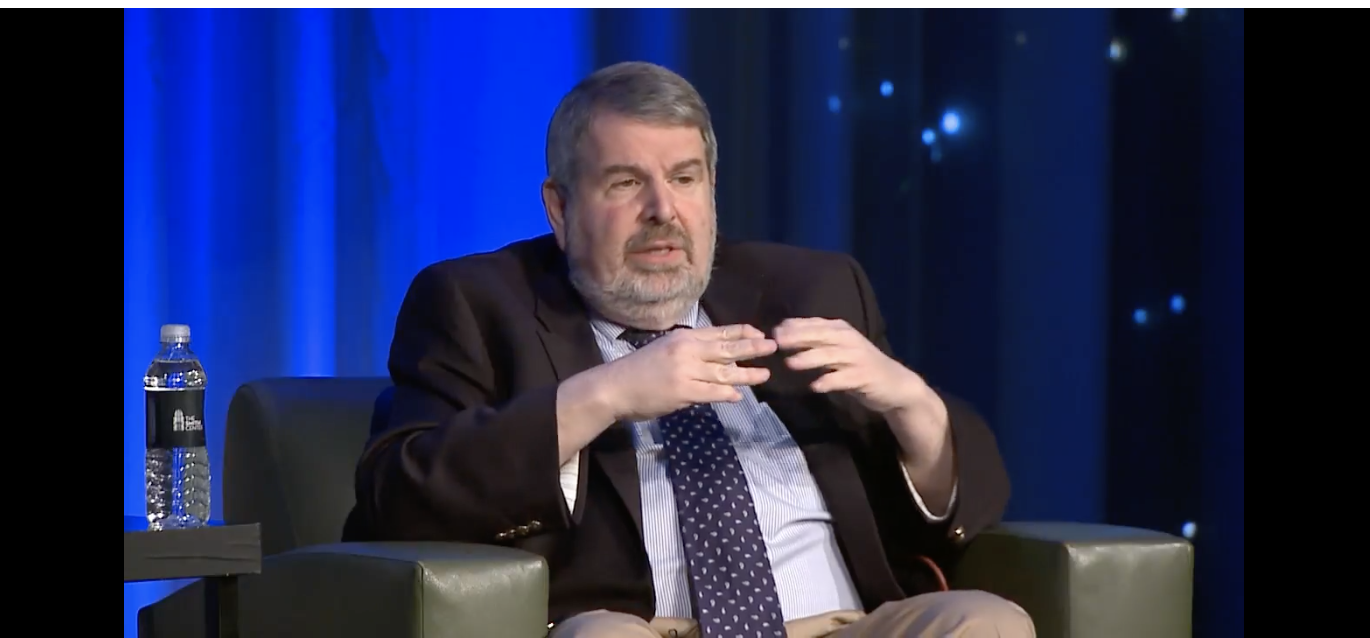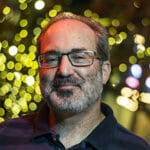Thoughts on the first independent poll of 2018 in Nevada

You should never judge a poll by its cover.
Such is the case with the first independent poll of 2018 earlier this month (600 statewide, margin of error of 4 percent) and was conducted by Mark Mellman. The headlines are easy: The U.S. Senate race is a tossup. Steve Sisolak is the likely Democratic nominee for governor and is a slight favorite over Adam Laxalt. The down-ballot races look good for Democrats. The two energy-related initiatives are locks. School choice has significant support.
All of this may be true, but the proverbial snapshot is just that: A picture of the state of a race or issue at a moment, significant in some ways and not in others.
Here are some of my thoughts on the cover story and what lies beneath – apologies in advance for the blizzard of numbers but they reveal things the toplines do not. (You can see all the data here and the video of my Indy Talks discussion with Mellman is below.)
---Demographics are not destiny: Mellman’s sample has a 42 percent to 39 percent Democratic registration edge, which is slightly below what the actual lead is for the Democrats. Republicans usually turn out in greater proportional numbers in midterms but that could be diminished this year. A poll is only as good as its modeling of the electorate. No one knows Nevada turnout patterns better than Mellman, but it is still very early.
The sample has 15 percent Hispanic voters, which would be relatively robust for an off-year but better than The Democratic Disaster of 2014. Will President Donald Trump and his Nevada backup singers, The Dog-Whistle Trio (Dean Heller, Adam Laxalt and Michael Roberson), drive Latino turnout up or down? It’s a key question for November.
---Trump the Albatross: The president’s approval numbers in Nevada (39 percent favorable and 56 percent unfavorable) are about as bad as Harry Reid ever got. He’s not on the ballot, but his presence looms large over the U.S. Senate race and may affect GOP turnout, for good or ill.
He is more unpopular with Democrats (8/86) than he is popular with Republicans (75/22) but his numbers with independents (30/60) should really worry the GOP.
Trump breaks even with whites (49/47), so you see where Republicans hope to find sanctuary. But he is manifestly unpopular with Hispanics (22/75) and his numbers with women under 40 (14/81) are horrible.
I found it interesting that the president is even more disliked in Washoe County (35/64), which is a swing county, than heavily Democratic Clark (37/59), which just may mean northerners are smarter than southerners. Trump’s rural numbers (56-35) remain strong, which is why the Nevada GOP hopes to gin up records turnout there this cycle. The rurals carried Attorney General Laxalt to victory in 2014 and put Cresent Hardy over the top for Congress, too.
---The third party: Independents and non-major parties will make up about 30 percent of registered voters by November. They could help decide the two top races for U.S. Senate and governor as well as many other down-ballot contests.
Sen. Heller and Laxalt are holding their own with indies right now despite Trump’s awful numbers, which is either an opportunity for growth or a warning beacon for Democrats.
---Heller of a showing: The poll is good news for the GOP senator. No one has tried harder to lose in the last six months and he is dead even (40-39) (Reminder he has never lost a race.)
Heller’s approval numbers (38/40) are not good, albeit better than some polls showed him last year. But Rep. Jacky Rosen is not well known – nearly two-thirds have no opinion or have not heard of her.
That’s why the race is tied, and this has always been Heller’s only path to victory: Hold his base and destroy the little-known by defining her negatively with indies and enough Dems. It’s how he beat Rep. Shelley Berkley six years ago, although Rosen is not under investigation by the House Ethics Committee.
The poll indicates Heller will do better with lower turnout – 2012 was a presidential year. But he is underwater with indies (31/42) and so-so with Republicans (60/22). He still has time to consolidate the base, but he lost votes during his short-lived primary with Danny Tarkanian and core voters can be especially unforgiving. If they don’t vote for him in great numbers, he’s dead.
But Heller is only losing Clark by six points and is even in Washoe. If that holds, he likely will survive, especially if his rural numbers (54-25) hold. He is terrible with Hispanics (23/43), but it could be worse.
Some pollsters think the numbers among those who know both candidates are significant, and Rosen leads by 12 in that cohort. Undecideds also are very unfavorable, by 30 points, to the president, which hurts Heller.
Heller’s numbers aren’t going to get much better, so his only chance is to make Rosen even more unacceptable. We have seen this before – when an unpopular Reid beat Sharron Angle in 2010.
One note, as pointed out by the nonpareil data man Harry Enten, whites in Nevada are becoming more Republicans, which will help Heller if minority turnout is down and white turnout is up. That’s why these campaigns will matter so much.
---Governor: The poll indicates the general election matchup is a fait accompli. But even Mellman pointed out at our IndyTalks event that primaries can be volatile, and 40 percent of the Democratic electorate is undecided. With neither Sisolak nor Chris Giunchigliani that well known, his 28-point lead is not as impregnable as one might think. But his huge financial advantage is real and important, which is why the state teachers union is trying to level the playing field with negative ads.
The GOP side really is over. Treasurer Dan Schwartz just isn’t well known and a 50-point lead is insurmountable in the time remaining. If the treasurer had $5 million….maybe.
Sisolak looks stronger (43-37) in the general election than Giunchigliani (38-40) because he is much better known by virtue of his TV campaign. Either could win, and Laxalt does not look that strong – indeed, half the voters have no opinion of him.
Laxalt is losing Clark by 13 and Washoe by 11 to Sisolak, which means he can’t win if those margins hold. That seems unlikely, but it’s clear he will need the kind of massive win the rurals that he had in 2014. (Laxalt is losing Clark by only 5 to Giunchigliani, which also seems unlikely to hold in the post-primary world of base consolidation.)
Those who know both candidates give the edge to Sisolak (by 10) and Giunchigliani (by 2), but that group will greatly expand soon. And one other factor we have yet to measure: How many votes will Cliven Bundy scion Ryan Bundy siphon from Laxalt in the rurals. If that number is significant — too early to tell — it’s hard to see how the attorney general can win.
---Down-ballot ciphers: The Democrats lead all of these we measured – Kate Marshall by 13 over Michael Roberson for lieutenant governor, Nelson Araujo by 5 over Secretary of State Barbara Cegavske and Aaron Ford by 9 over Wes Duncan for attorney general.
But Democrats should not take too much heart in these numbers. None of the candidates are very well known, even former two-term Treasurer Marshall. The so-called “hard ID” number doesn’t get beyond a fifth of the electorate for any of them.
I hate to say our poll means nothing in these races, even though Marshall already is at 40 percent. But it doesn’t mean much.
---Lots of choice: The Energy Choice Initiative (54-16) and a higher renewable standard proposal (68-20) look as if they can’t lose. That’s probably true of the latter, but if NV Energy & Co. really put $30 million into trying to persuade people of the benefits of monopolies, that one could be much closer than it now seems, as Mellman pointed out.
On school choice, at 49-38, it’s more popular than Democrats want to think, and that’s their own fault. Their resistance to change and the problems in the Clark County School District have given choice advocates fertile ground. It will be interesting to see who brandishes the issue in campaigns, beyond Laxalt, some GOP legislative candidates and the bizarre and highly questionable use by a candidate for state Supreme Court, Jerry Tao.
Bottom line: The only race that seems over is the GOP contest for governor. The Democratic race for governor heavily leans to Sisolak, but it’s a primary electorate so I can’t call it quite yet.
Trump is going to be a problem for Heller and other Republicans, it seems, but the Democrats still need to boost their registration edge and turnout machine to avoid turning a golden opportunity into a pyrite election.
Disclosure: NV Energy, Shelley Berkley, Steve Sisolak and Chris Giunchigliani have donated to The Nevada Independent. You can see a full list of donors here.
Jon Ralston is the editor of The Nevada Independent. He has been covering Nevada politics for more than 30 years. Contact him at [email protected]. On Twitter: @ralstonreports
